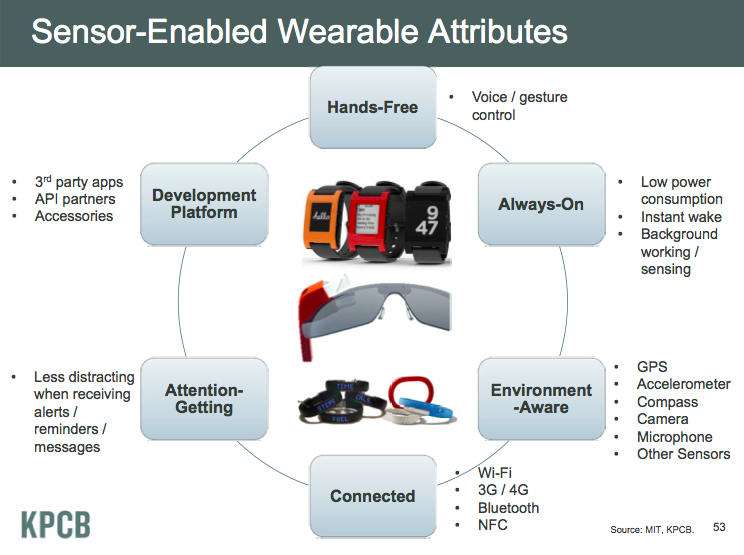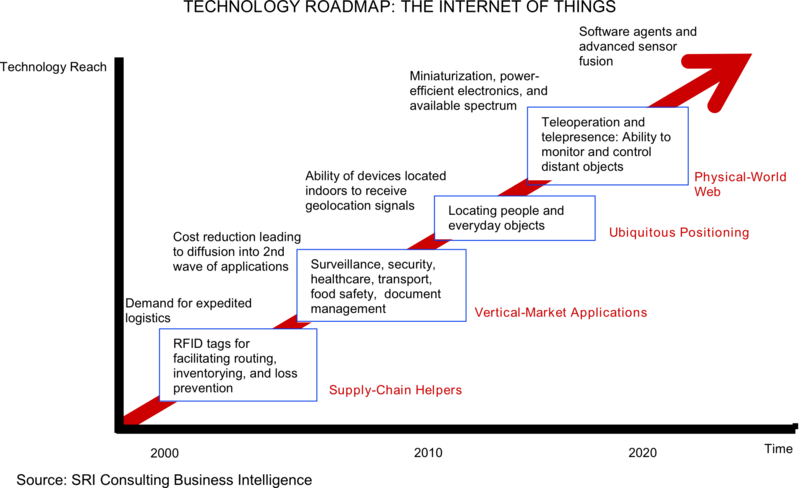This page continues to be a work in progress
FUTURE OF MOBILE LEARNING
The advances in technology really beg the question as to whether “mobile learning” and “elearning” can be separate entities. The ubiquitous nature of the Internet and increases in connectedness in both people and the environment make learning possible in many ways that are mobile and without the devices we typically think of needing for “education”.
Consider for example the educational implications of this recent example:
A friend had just purchased a Google Watch and we were talking about his favorite baseball team (RedSox), when the phone instantly displayed their schedule and latest score.
How is that possible? The phone LISTENS to its environment. (Other devices do this now too: XBOX, Facebook mobile app, amongst others)
Technological advances provide information, interactions, connections and LEARNING opportunities–as convergence continues to accelerate–in ways we’ve never thought possible.
What is the Future of Mobile Technology and Learning?
This page is a work in progress and an opportunity to share with others the power, potential, and developments in technology related to mobile devices and mobile learning. Future separate posts will share my thoughts on the moral/ethical implications, concerns and other thoughts I have on these developments.
For now, share the page and your thoughts in the discussion! Thanks
GEO-LOCATION LEARNING
Information and experiences that are presented to individuals in specific places.
- WikiMe (iPhone App) https://itunes.apple.com/us/app/wikime/id286865365?mt=8
Description: WikiMe is a fun and interesting way to find Wikipedia articles for your current location or a postal code of your choice. By default WikiMe uses the current location found by your device to search for geotagged Wikipedia articles near you. It’s unlike the experience you have when browsing to the Wikipedia website, because of the geotagged articles WikiMe searches for, you get articles related to a location.
AUGMENTED REALITY
Definition: Technology that superimposes a computer-generated image on a user’s view of the real world, thus providing a composite view.
My favorite video related to Augmented Reality’s power and potential: SIGHT [7:50 min]
Sight from Robot Genius on Vimeo.
- Augmented Reality APPS: https://edshelf.com/profile/cbeyerle/augmented-reality-for-education
My frequently used Android Augmented Reality Apps are: Sky Map & Word Lens
A couple years ago, I made a video demonstrating NASA’s 3D Curiosity Rover [HERE] - Google Glass (Video: AR Demo/Review)
- Microsoft Project Fortaleza
- Oakley Airwave
- Oculus Rift <– I got to play with this last year and am working on a video of that experience. AMAZING!
- Sony Project Morpheus
- Vuzix Wrap 920 AR https://www.youtube.com/watch?v=xfiZQW0k2Ro
WEARABLE

 I was an early backer of the Pebble Watch on Kickstarter back in May of 2012, which received over $10 million dollars in backing (their goal was $100K). It was arguably the first watch to bring us closer to the 1930’s comic strip Dick Tracy.
I was an early backer of the Pebble Watch on Kickstarter back in May of 2012, which received over $10 million dollars in backing (their goal was $100K). It was arguably the first watch to bring us closer to the 1930’s comic strip Dick Tracy.
The success of Pebble ushered in many more similar watches by other companies, with increasingly greater powers and wearable technology only continues to increase.
Wearable technology continues to expand in other areas. I’m a big fan of my FitBit for fitness, sleep, and diet monitoring. Future wearable technology won’t be something you’ll have to remember to put on because it will be embedded INTO people. [A] [B]
Find below a list of wearable technology:
- Google Glass- Video [2:15 min] https://www.youtube.com/watch?v=v1uyQZNg2vE
- Top 7 Google Glass Alternatives:http://blog.laptopmag.com/google-glass-alternatives
- Atheer One
- ChipSiP Smart Glasses
- Epson Moverio BT-200
- GlassUp
- Meta Pro
- Optinvent ORA
- Vuzix M100
- Google Now Is The Killer App For Android Wear
http://techcrunch.com/2014/07/05/google-now-is-the-killer-app-for-android-wear/
AMBIENT INTELLIGENCE (AmI)
In computing, ambient intelligence (AmI) refers to electronic ENVIRONMENTS that are sensitive and responsive to the presence of people.
Ambient intelligence is a vision on the future of consumer electronics, telecommunications and computing that was originally developed in the late 1990s for the time frame 2010–2020.
In an ambient intelligence world, devices work in concert to support people in carrying out their everyday life activities, tasks and rituals in an easy, natural way using information and intelligence that is hidden in the network connecting these devices (see Internet of Things).
As these devices grow smaller, more connected and more integrated into our environment, the technology disappears into our surroundings until only the user interface remains perceivable by users.
The ambient intelligence paradigm builds upon pervasive computing, ubiquitous computing, profiling, context awareness, and human-centric computer interaction design and is characterized by systems and technologies that are (Zelkha & Epstein 1998; Aarts, Harwig & Schuurmans 2001):
- embedded: many networked devices are integrated into the environment
- context aware: these devices can recognize you and your situational context
- personalized: they can be tailored to your needs
- adaptive: they can change in response to you
- anticipatory: they can anticipate your desires without conscious mediation.
Ambient intelligence is closely related to the long term vision of an intelligent service system in which technologies are able to automate a platform embedding the required devices for powering context aware, personalized, adaptive and anticipatory services.
[Definition Source: ]
Internet of Things (IoT)
Started in 2008, it is simply the interconnectedness of THINGS (as opposed to people). Connect the physical world to the Internet. the planet and everything on it will be the Internet of Things (to observe and control)–EVERYTHING AND ANYTHING. And PEOPLE will be part of that Internet of Things .
I can’t help but think of a couple dystopian Science Fiction movies I grew-up with that I think apply here [1] [2] but, will save my in-depth personal thoughts for later posts.
Watch these two video to learn more about the Internet of Things:
- Intel Video: How the Internet of Things Will Change EVERYTHING–Including Ourselves. [3:17 min]
- REALLY GOOD explanatory Ted Talk: Dr. John Barrett at TEDxCIT: The Internet of Things [17:06 min]

The Internet of Things (IoT, also Cloud of Things or CoT) refers to the interconnection of uniquely identifiable embedded computing like devices within the existing Internet infrastructure. Typically, IoT is expected to offer advanced connectivity of devices, systems, and services that goes beyond machine-to-machine communications (M2M) and covers a variety of protocols, domains, and applications. The interconnection of these embedded devices (including smart objects), is expected to usher in automation in nearly all fields, while also enabling advanced applications like a Smart Grid.
Things, in the IoT, can refer to a wide variety of devices such as heart monitoring implants, biochip transponders on farm animals, automobiles with built-in sensors, or field operation devices that assist fire-fighters in search and rescue. Current market examples include smart thermostats such as the nest and washer/dryers that utilize wifi for remote monitoring.
Due to the ubiquitous nature of connected objects in the IoT, an unprecedented number of devices are expected to be connected to the Internet. According to Gartner, there will be nearly 26 billion devices on the Internet of Things by 2020. ABI Research estimates that more than 30 billion devices will be wirelessly connected to the Internet of Things (Internet of Everything) by 2020. Per a recent survey and study done by Pew Research Internet Project, a large majority of the technology experts and engaged Internet users who responded—83 percent—agreed with the notion that the Internet/Cloud of Things and embedded and wearable computing will have widespread and beneficial effects by 2025. It is, as such, clear that the IoT will consist of a very large number of devices being connected to the Internet.
[Definition Source- Wikipedia: The Internet of Things]
Google’s PROJECT TANGO
A very new and unique mobile phone that gives understanding of space and motion as it tracks your 3D position with millions of calculations per second. Localization and mapping provides interactions with one’s environment like never before.
- Google’s Project Tango Web Site: https://www.google.com/atap/projecttango/#project
- Google’s Video Introduction [2:57 min]: https://www.youtube.com/watch?v=Qe10ExwzCqk
- Video Review by The Verge [3:21 min]: https://www.youtube.com/watch?v=g_9ZMi8R8lo
